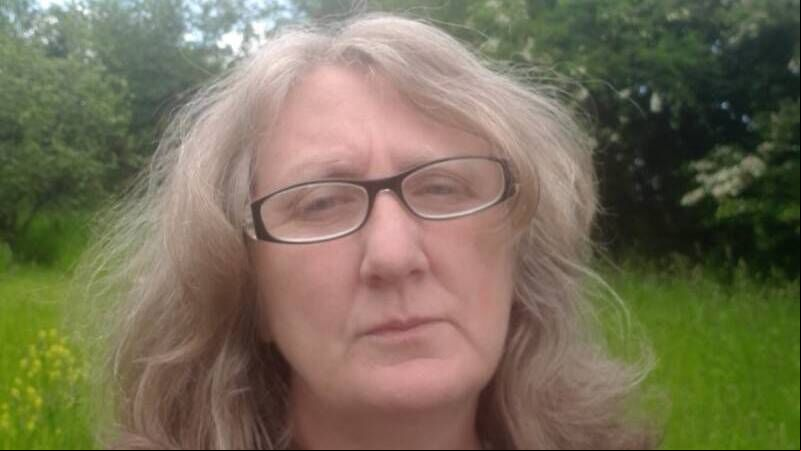Why I’m looking for ladybirds...

Cork Nature Network's Gill Weyman
THEY’RE the brightly coloured little insects of children’s rhymes and storybooks, but up close and personal, they’re voracious predators, even cannibals.
Ladybirds, Gill Weyman explains, are a lot more complex than many people might believe.
“They are very charismatic; children love them, so people have a connection to them,” Gill says.
“They are predatory, so they have an important role in pest control in the garden, and they’re cannibals, so they do eat each other. Not in adult form, but when they first hatch as larvae, they will eat other eggs and other larvae.”
Gill is the chairperson and co-founder of Cork Nature Network. And she’s currently completing a PhD on ladybirds that has involved a citizen science project where volunteers have recorded over 1,000 sightings of the colourful little beetles.
Her research, in conjunction with UCC’s School of BEES (Biological, Earth and Environmental Sciences) and Fota Wildlife Park, aims to document the status, protection and conservation of ladybirds in Ireland.

But documenting the presence of the tiny creatures, which are 5mm in length, is like searching for the proverbial needle in a haystack, which is why Gill chose to enlist the help of volunteer ladybird-spotters.
“ of the public have been fantastic,” Gill says. “Before I started, records were quite low but through the citizen science project, I’ve accumulated more than 1,000 records through the Irish Ladybirds Facebook page and twitter , and on www.biology.ie, where people can submit records. The response has been great.”
Most Irish ladybird research to date has focused on the presence of one species of ladybird: the Harlequin, which is an invasive species originally from Asia that may threaten the survival of indigenous ladybirds. While Gill is keen to document all species, she too is concerned by the presence of the Harlequin, which is now widespread in Cork.
Some UK research has shown a decline in native ladybird species and it’s feared this is linked to the presence of the Harlequin.
As with so many of the threats to wildlife, the invasion of these little bodysnatchers is a man-made problem: Harlequin ladybirds were farmed and used as pest-control in market gardening in the U.S and Europe beginning in the 1970s, Gill explains.
“Of course, they escaped out into the wild. That’s aided by how we travel, how we live, how we transport things like fruit and flowers. It’s very hard to stop once it’s happening.”
The interloper was first spotted on Irish shores in County Antrim in 2009, and had been found in County Cork by the following year. Gill says they are now “well-established in Cork city”.
“They are in Glanmire, Cobh, Rochestown and Ballincollig,” she says. “They have spread, but they’re very slow-spreading in Ireland, which is interesting and which is a factor I’ll be looking at in more detail.”

Gill is in her final year of survey work in the field, and will soon begin writing her PhD, which she started in 2015, but which suffered a hiatus due to Covid-19 restrictions.
She is originally from north Devon, where her childhood on a farm led to a lifelong love of the natural world.
“I was brought up on a farm on the edge of Exmoor, which was pretty remote,” she says.
“I would spend a lot of time walking around in the woodland on the edge of our fields. There was a river on the border of the land: you could hear deer calling and see foxes and things like that.
She arrived on Irish shores to do some voluntary work at the marine station on Sherkin Island in West Cork in the mid-1990s, and ended up staying.
In 2015, she co-founded Cork Nature Network, a ed charity that runs events and campaigns to highlight the importance of protecting our local environment and biodiversity, as well as managing sites like Beaumont Quarry and Parkowen wildflower meadow as biodiversity projects.
For Gill and the other of Cork Nature Network, local action is an important way to highlight global problems: with a mounting biodiversity crisis and fears about climate change sometimes feeling like abstract or insurmountable problems, getting out and about in Cork city and county and working on tangible environmental issues at a local level is a growing response that’s generating increasing interest in recent years.
“People are actually taking time to get out and see what they have locally,” she says.
Since the start of the Covid-19 crisis in 2020, and restrictions that have made people focus even more on their immediate locality, this shift in awareness has accelerated: a recent online event focused on otters drew more than 200 people, with other online events attracting 40 or more.
“I think the numbers just show that there is a keenness for people to reinforce their connection to nature,” Gill says.
Other local and national movements, including the All-Ireland Pollinator Plan, have added to awareness. But for Gill, this growing interest amongst private citizens needs to be matched by real action, because habitat loss due to human activity, city developments and building projects is an observable phenomenon.
“The habitat availability for insects has been reduced,” she says. “We see it with Cork Nature Network, all the time. Trees being cut down, the way we manage our hedgerows: all these things have an impact. It’s there, staring us in the face. It’s just how we address it.
For more on Gill's work see https://www.facebook.com/Irishladybirds







 App?
App?


